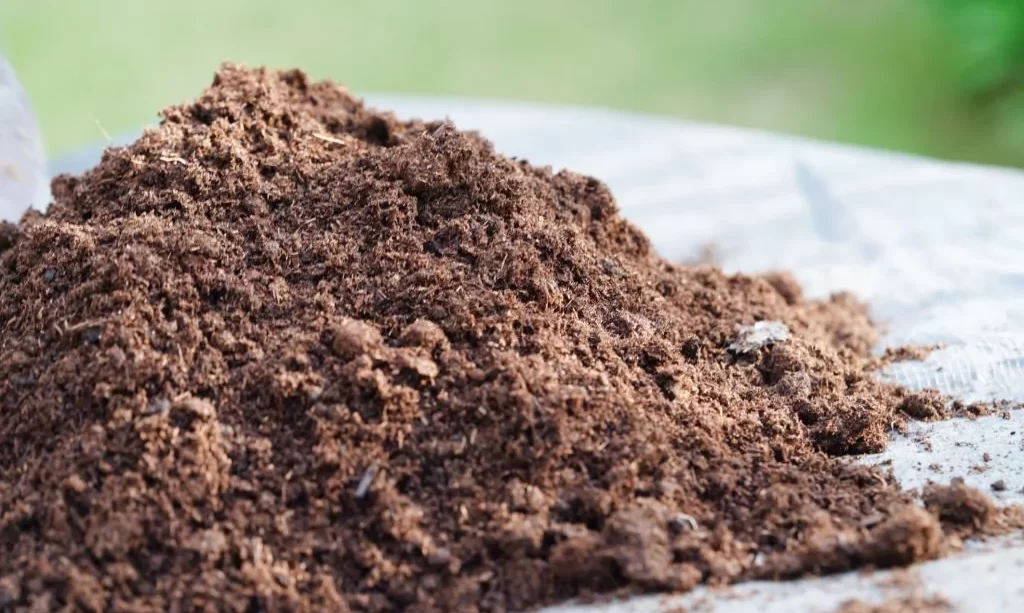When we think of the natural world beneath our feet, we often envision a humble substance called “dirt”. Yet, this unassuming layer of the Earth’s surface plays a fundamental role in sustaining life on our planet. To understand dirt, we must delve into its composition, uncovering the myriad elements and compounds that come together to form this essential foundation. In this exploration, we will unravel the mysteries of what dirt is made of, beginning with the Earth’s building blocks—minerals. As we embark on this journey, we’ll discover how these minerals, along with other components, create the rich tapestry of soil that nurtures life and supports ecosystems.
Minerals: The Earth’s Building Blocks
At the heart of dirt’s composition are minerals, the sturdy and enduring building blocks of the Earth’s crust. These minerals, formed through geological processes over millions of years, provide the structural framework of soil. Common minerals found in dirt include quartz, feldspar, mica, and numerous others, each contributing its unique properties to the mix.
Minerals play a pivotal role in determining dirt’s texture, color, and physical properties. For instance, quartz-rich soils tend to be gritty and well-draining, while clay soils, dominated by minerals like kaolinite, are known for their fine, sticky texture. The mineral composition also influences the color of soil, with iron-rich minerals imparting reddish hues and organic matter contributing dark tones.
Beyond texture and color, minerals in dirt serve as reservoirs for essential plant nutrients like potassium, calcium, and magnesium. These minerals slowly release these nutrients into the soil, making them available for plant uptake. Without minerals, soil would lack structure, and the nutrients necessary for plant growth would be far less accessible.
As we delve deeper into the composition of dirt, it becomes clear that minerals are the bedrock upon which soil fertility and plant life are built. Understanding their role is the first step in comprehending the complexity of this unassuming yet vital layer of the Earth’s surface.
Organic Matter: The Living Component
Beneath the surface of the Earth, dirt is not merely a lifeless collection of minerals; it teems with vitality thanks to the presence of organic matter. Organic matter is the living component of soil, a rich and diverse mixture of decomposed plant and animal material. This dynamic blend includes everything from fallen leaves and twigs to the remains of microorganisms and insects. The constant cycle of life and death in the soil ensures a steady supply of organic matter, making it an essential part of dirt’s composition.
Organic matter contributes to soil in numerous ways. It improves soil structure by binding particles together, preventing erosion and compaction. It acts as a sponge, enhancing water retention in the soil, thereby helping to prevent drought stress for plants. Moreover, organic matter serves as a nutrient reservoir, storing essential elements like nitrogen, phosphorus, and carbon. Over time, organic matter breaks down into humus, a dark, spongy material that enhances soil fertility and promotes healthy plant growth.
Beyond its physical and chemical benefits, organic matter also supports an intricate web of life in the soil. Microbes, fungi, earthworms, and other soil-dwelling organisms feed on organic matter, breaking it down further into nutrients that are accessible to plants. This microbial activity contributes to the overall health and balance of the soil ecosystem.
In essence, organic matter is the life force within dirt, the embodiment of nature’s recycling system. It showcases the interdependence of all living things, demonstrating how the remnants of one generation nourish the next. As we delve deeper into the composition of dirt, we see that its vitality and fertility are closely linked to the abundance of organic matter it harbors.
Water: The Lifeblood of Soil
Water, often described as the lifeblood of soil, is another critical component in the composition of dirt. Just as it is essential for all living creatures, water plays a pivotal role in the health and functionality of soil ecosystems. Without an adequate supply of water, soil would be an inhospitable environment for plants, microorganisms, and other soil-dwelling organisms.
Water’s significance in soil begins with its ability to fill the spaces between soil particles, known as pore spaces. This enables soil to hold water like a reservoir, making it available to plant roots. The balance of water in soil is crucial: too much can lead to waterlogged conditions and root rot, while too little can result in drought stress and poor plant growth.
In addition to providing hydration to plants, water serves as a transport medium for essential nutrients. It carries dissolved nutrients from the soil to plant roots, ensuring the supply of vital elements necessary for growth and development. The availability of water also influences soil temperature, helping to regulate the temperature extremes that plants may experience.
Water’s role extends beyond nourishing plants. It facilitates chemical reactions in the soil, promotes microbial activity, and influences the decomposition of organic matter. All these processes are interconnected, highlighting the intricate relationship between water and the other components of dirt.
In essence, water is the life force that sustains the living organisms within the soil, ensuring the fertility and productivity of the land. As we explore the composition of dirt, we come to appreciate the vital role that water plays in nurturing the vibrant ecosystems beneath our feet.
Air: The Unsung Hero
Amidst the minerals, organic matter, and water in soil, there is an unsung hero that plays a pivotal role in the health and well-being of dirt—air. Soil may seem solid and unyielding, but it contains a network of tiny, interconnected pores filled with air. This exchange of gases between the soil and the atmosphere is crucial for maintaining soil vitality and supporting life within it.
Air in the soil primarily consists of oxygen (O2) and carbon dioxide (CO2). Oxygen is vital for the respiration of plant roots and soil-dwelling organisms. Just as humans and animals breathe, plant roots and many soil microbes require oxygen to carry out their metabolic processes. Adequate soil aeration, which allows oxygen to penetrate deep into the soil, is essential for healthy root growth and microbial activity.
On the flip side, carbon dioxide, a product of respiration and decomposition, is released from the soil into the atmosphere. This exchange of gases helps regulate the balance of these essential elements, facilitating the decomposition of organic matter, nutrient cycling, and microbial activity.
Soil compaction, often caused by heavy machinery or foot traffic, can disrupt the flow of air in the soil, leading to reduced oxygen levels. In such conditions, plant roots may suffocate, and beneficial soil organisms may struggle to thrive. Therefore, maintaining proper soil aeration through practices like no-till farming and avoiding excessive compaction is crucial for soil health and fertility.
While air may be invisible, its role in soil composition is undeniably vital. It ensures that life beneath the surface has access to the oxygen required for growth and sustenance. In the intricate dance of elements within dirt, air quietly plays the role of an unsung hero.
Microorganisms: The Invisible Workers
Beneath the Earth’s surface, an invisible workforce tirelessly labors to break down organic matter, recycle nutrients, and maintain the overall health of soil. These diligent workers are none other than microorganisms—tiny, often single-celled organisms that thrive in the moist and nutrient-rich environment of soil.
Soil microorganisms encompass a vast array of life forms, including bacteria, fungi, protozoa, and nematodes, to name a few. They play pivotal roles in nutrient cycling, decomposition, and soil structure improvement. For instance, bacteria and fungi are responsible for breaking down complex organic compounds into simpler forms, making nutrients accessible to plants.
Fungi, with their thread-like structures called mycelium, form intricate networks that help bind soil particles together, improving soil structure and water retention. In addition to aiding decomposition, fungi can form beneficial symbiotic relationships with plant roots, enhancing nutrient uptake.
Protozoa and nematodes, though tiny, are essential predators in the soil food web. They consume bacteria and fungi, regulating their populations and maintaining a balanced microbial community. This balance contributes to soil health and nutrient cycling.
Microorganisms are the invisible architects and engineers of soil, shaping its physical and chemical properties. Their work promotes soil fertility and ensures the recycling of organic matter, creating a sustainable and nurturing environment for plants.
As we delve deeper into the composition of dirt, we recognize the intricate and essential role played by these microorganisms. They are the silent caretakers of soil health, working tirelessly beneath our feet to sustain the vibrant life that flourishes above the surface.
Gases: Essential for Life
Within the complex tapestry of soil, gases play a pivotal role in nurturing life and maintaining the delicate balance of soil ecosystems. Among the most important gases in soil are oxygen (O2), carbon dioxide (CO2), and nitrogen (N2). These gases are essential for various biological and chemical processes that sustain soil health and support plant growth.
Oxygen, vital for respiration, enables the survival of plant roots and soil-dwelling organisms. It facilitates the breakdown of organic matter, a process known as decomposition, by providing the energy required for microorganisms to metabolize organic materials. Proper soil aeration, which allows oxygen to penetrate deep into the soil, is essential for root health and microbial activity.
Carbon dioxide, a byproduct of respiration and decomposition, is released from the soil into the atmosphere. This exchange of carbon dioxide helps regulate the carbon cycle, which has significant implications for climate change. In the soil, carbon dioxide levels also affect pH and nutrient availability, influencing plant growth.
Nitrogen gas, while abundant in the atmosphere, must be converted into forms that plants can use, primarily nitrate (NO3-) and ammonium (NH4+). Soil-dwelling microorganisms, such as nitrogen-fixing bacteria, play a crucial role in this conversion process. Nitrogen availability in soil directly impacts plant growth and the overall health of ecosystems.
Understanding the dynamics of gases in soil is essential for maintaining soil fertility and supporting plant life. Soil compaction, waterlogging, or improper aeration can disrupt the balance of these gases, potentially harming plants and soil organisms. Thus, appreciating the role of gases in the composition of dirt is key to nurturing healthy soils and sustainable ecosystems.
pH and Chemical Composition: Influencing Soil Quality
The pH and chemical composition of soil are critical factors that significantly influence soil quality and plant health. pH, a measure of soil acidity or alkalinity, plays a fundamental role in determining nutrient availability, microbial activity, and plant growth.
Soil pH is measured on a scale from 0 to 14, with 7 being neutral. Soils with a pH below 7 are considered acidic, while those with a pH above 7 are alkaline. Most plants prefer a slightly acidic to neutral pH range (around 6 to 7), as this is where nutrient availability is optimized. However, different plants have varying pH preferences, and understanding these preferences is essential for successful gardening and farming.
The chemical composition of soil encompasses a range of elements and compounds, including cations (positively charged ions) like calcium (Ca2+), magnesium (Mg2+), and potassium (K+), as well as anions (negatively charged ions) like nitrate (NO3-) and phosphate (PO4^3-). These elements are essential for plant growth and are typically supplied through fertilizers or natural processes like weathering of minerals.
The availability of these chemical components in soil is influenced by pH. For instance, in alkaline soils, iron and manganese may become less available to plants, leading to nutrient deficiencies. In acidic soils, aluminum toxicity may pose a challenge to plant health. Thus, maintaining an appropriate pH level through soil amendments and careful nutrient management is crucial for optimizing plant growth.
In summary, the pH and chemical composition of soil are dynamic factors that directly impact soil quality and plant performance. A balanced understanding of these elements is essential for effective soil management and ensuring healthy and productive gardens and agricultural fields.
Texture and Structure: The Feel of Dirt
The texture and structure of soil are two characteristics that not only influence how dirt feels in our hands but also dictate its suitability for plant growth and its ability to support diverse ecosystems. Soil texture refers to the proportions of sand, silt, and clay particles present in the soil. The relative amounts of these particles determine soil texture categories, such as sandy, loamy, or clayey soils.
Sandy soils have larger particles and feel gritty, providing excellent drainage but often requiring more frequent watering. Clayey soils have tiny particles that feel smooth when wet but sticky when dry. They retain water well but may become waterlogged. Loamy soils, often considered the ideal garden soil, strike a balance between drainage and water retention, with particles that feel crumbly and rich.
Soil structure, on the other hand, pertains to the arrangement of soil particles into aggregates or clumps. Healthy soil structure creates pores and channels that allow for air and water movement. Well-structured soil is like a sponge, absorbing and holding moisture while providing space for roots to grow and air to circulate.
Achieving the right balance of texture and structure is crucial for successful gardening and farming. It ensures that plants receive adequate water, oxygen, and nutrients, fostering healthy growth and vibrant ecosystems. Understanding the feel of different soils and their inherent characteristics empowers gardeners and farmers to make informed decisions about soil management and crop selection.
Human Impact on Soil Composition
While dirt may appear timeless and unchanging, human activities have a significant impact on soil composition. The way we use land for agriculture, construction, and industrial processes can alter the delicate balance of soil components and disrupt its natural functions.
Soil erosion, often accelerated by deforestation or improper land management, can strip away valuable topsoil rich in organic matter and nutrients. Pollution from industrial activities, urbanization, and agricultural chemicals can contaminate soil, making it less hospitable to plant life and potentially harmful to human health.
Overgrazing by livestock, excessive tilling, and deforestation can lead to soil compaction, reducing its ability to hold water and support microbial life. These practices can also release stored carbon into the atmosphere, contributing to climate change.
However, responsible soil stewardship can mitigate these impacts. Practices such as crop rotation, reduced tillage, cover cropping, and organic farming promote soil health and biodiversity. Sustainable land management and conservation efforts help protect this valuable resource for future generations.
Conclusion
Dirt, often taken for granted, is a dynamic and intricate composition of minerals, organic matter, water, air, gases, microorganisms, and chemical elements. It serves as the foundation for all terrestrial life, supporting ecosystems and agriculture worldwide. Understanding the components of dirt and their interplay allows us to harness its fertility for food production, maintain the health of our planet, and appreciate the intricate web of life that thrives beneath our feet.
As stewards of the land, it is our responsibility to care for the soil, recognizing the impact of human activities on its composition and health. Through sustainable practices and a deeper understanding of soil science, we can ensure that dirt continues to nurture life and provide for our needs while preserving the beauty and richness of our natural world. Ultimately, the ground beneath our feet, our humble dirt, is a testament to the wonders of our planet and the intricate connections that sustain life on Earth.



